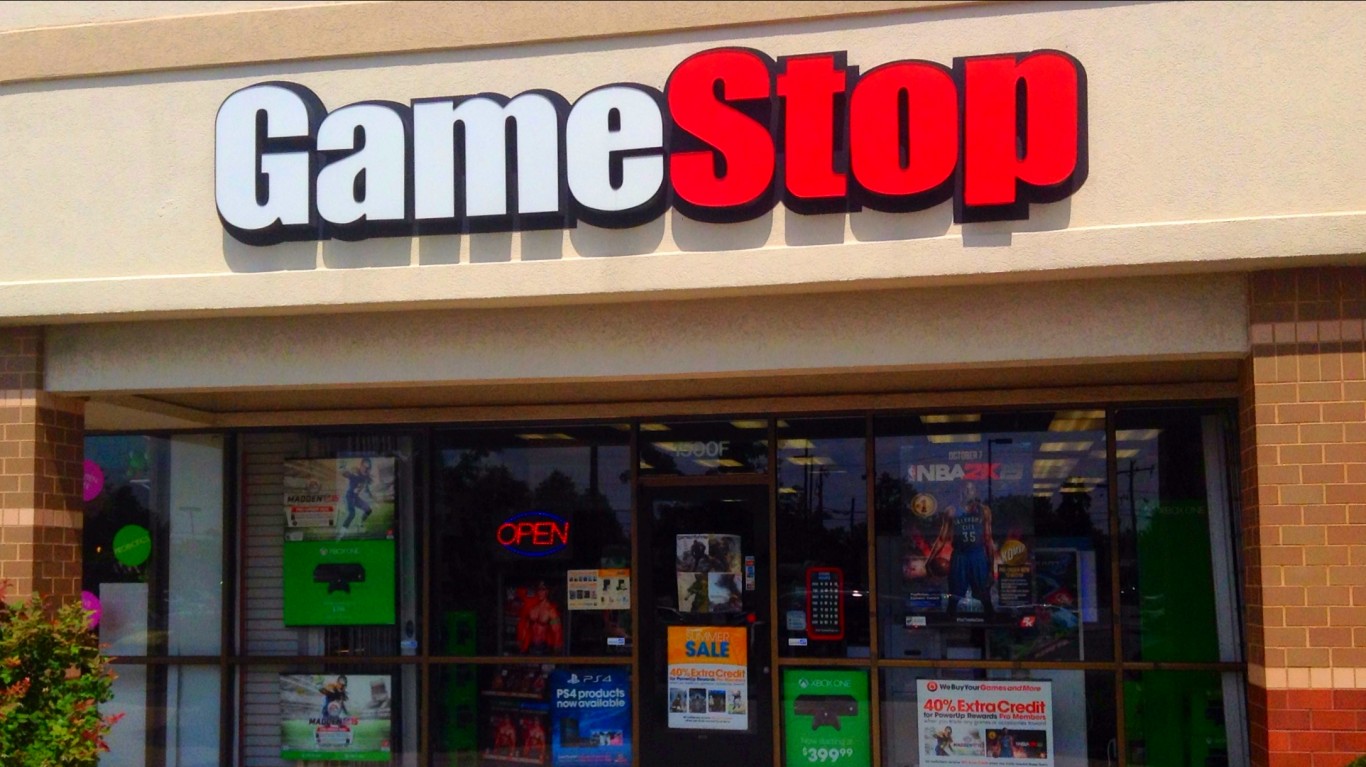Investing
Meme Stocks Have Made a Comeback This Year as Retail Goes All In

Published:

Meme stocks are coming back in 2023, leading the charge in a resurgence of risk-on investments this year. Gamestop is up 34% YTD, with similar gains for other firms like Rivian (up 42% YTD), Blackberry (up 46% YTD), and Palantir (up 182% YTD).
With the bull-bear spread being positive for the longest stretch since November 2021, the renewed bullishness is reminiscent of the late 2021 market boom when the market saw increasing retail participation before a catastrophic crash.
The MEME ETF, an ETF tied to the Solactive Roundhill Meme Stock Index that tracks the performance of meme stocks, has shown impressive gains, rising by 61% this year. The index’s top holding is Bitcoin miner Riot Platforms, which has surged by 439% this year.
Artificial-intelligence lending platform Upstart Holdings with a 308% increase, Coinbase Global with a 196% rise, electric-car maker Rivian Automotive with a 34% uptick, and Carvana, which has seen an astounding 740% surge, are some other best-formers of the fund.
Furthermore, Bitcoin has defied expectations and soared by 80% in 2023, further fueling retail traders’ enthusiasm. The rally came despite increasing regulatory scrutiny in the US, with the SEC launching complaints against some of the most prominent players in the industry, including Binance and Coinbase.
Bullish sentiment among retail investors, representing the expectation that stocks will rise in the next six months, recently reached its highest level since 2021, as per the surveys conducted by the American Association of Individual Investors.
Furthermore, the bull-bear spread, indicating the difference between investors predicting a market increase versus those anticipating a downturn, has been positive for six consecutive weeks, marking the longest stretch since November 2021.
Confidence in the American economy as a whole is also on the rise. Consumer sentiment, measured by the University of Michigan’s survey, has surged from 64.4 to 72.6 in July. This boost represents the highest reading since September 2021 and the most substantial increase since 2005.
David Wagner, a portfolio manager at Aptus Capital Advisors, argued that since the Federal Reserve intervened in March to stabilize the banking system, investors have felt less apprehensive about potential risks. “The only thing that can stop this rally is if a big-time risk is put back on the table,” he said.
Some market experts have argued that the market may be heading toward a crash. They noted that late 2021 witnessed a similar euphoric sentiment among retail investors, with low put-call ratios and a subdued VIX volatility index, which eventually ended with the market
Aside from the vitality, other factors raise concerns about the economy’s stability. For one, increasing borrowing costs threaten economic growth, potentially limiting credit access for businesses and households.
Over the past year, rates on auto loans and mortgages have risen by approximately 3 percentage points, while interest on credit cards has increased from 16% to 22%, according to Federal Reserve data. Although inflation has slightly decreased, reaching 3% in June, it still surpasses the Federal Reserve’s target rate of 2%.
Jason Bloom, head of fixed income and alternatives ETF strategy for Invesco, cautions that interest rates will need to continue rising if the economy enters stagflation. “That’s not a great recipe for investors,” he said.
This article originally appeared on The Tokenist
The average American spends $17,274 on debit cards a year, and it’s a HUGE mistake. First, debit cards don’t have the same fraud protections as credit cards. Once your money is gone, it’s gone. But more importantly you can actually get something back from this spending every time you swipe.
Issuers are handing out wild bonuses right now. With some you can earn up to 5% back on every purchase. That’s like getting a 5% discount on everything you buy!
Our top pick is kind of hard to imagine. Not only does it pay up to 5% back, it also includes a $200 cash back reward in the first six months, a 0% intro APR, and…. $0 annual fee. It’s quite literally free money for any one that uses a card regularly. Click here to learn more!
Flywheel Publishing has partnered with CardRatings to provide coverage of credit card products. Flywheel Publishing and CardRatings may receive a commission from card issuers.
Thank you for reading! Have some feedback for us?
Contact the 24/7 Wall St. editorial team.